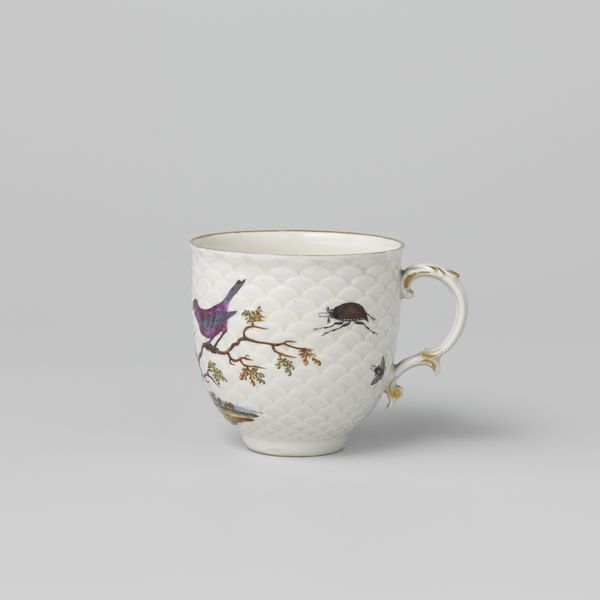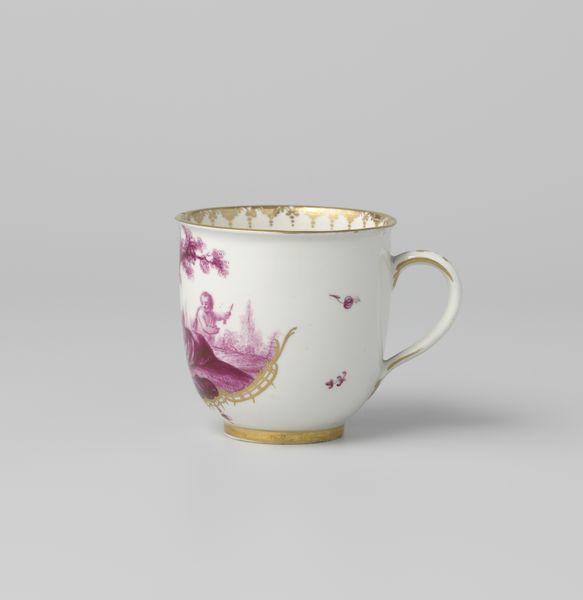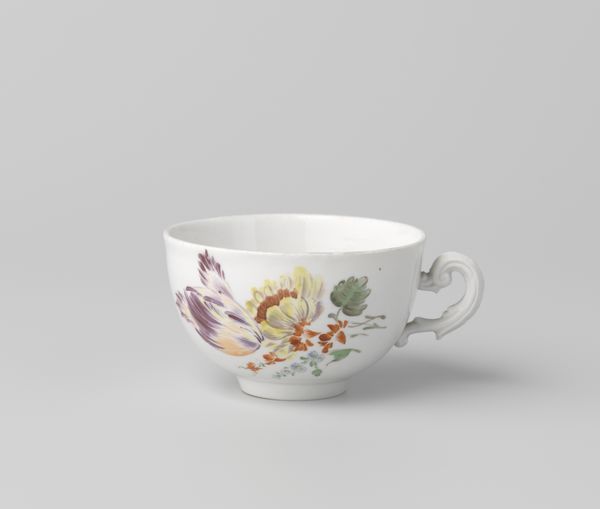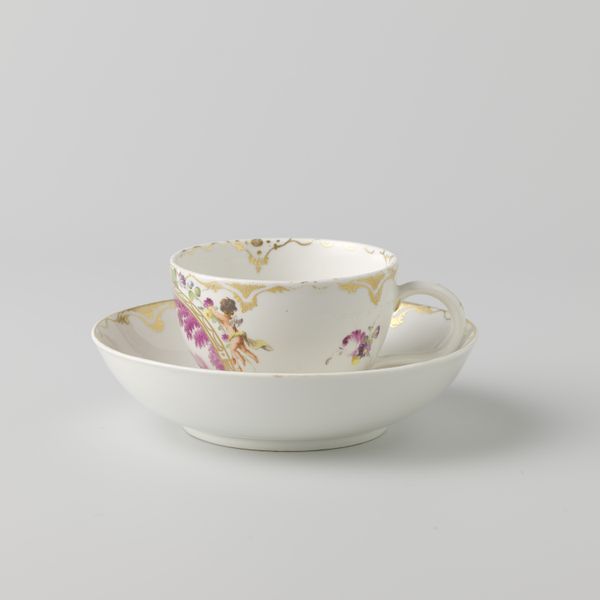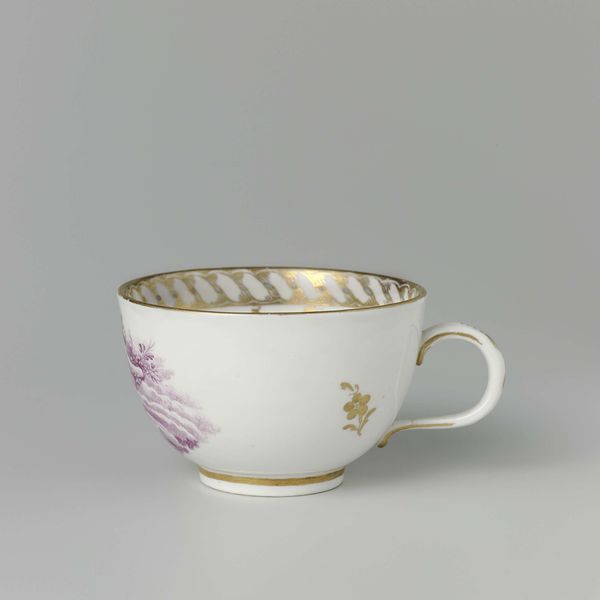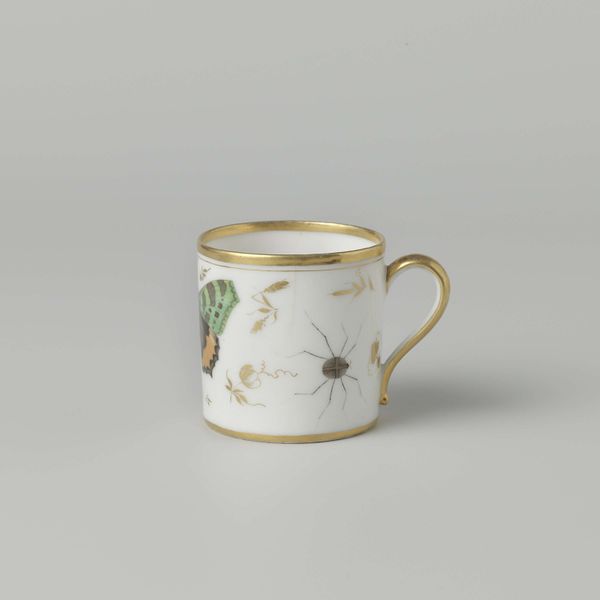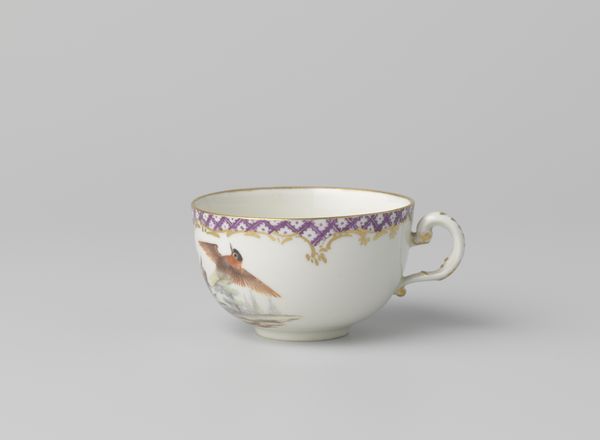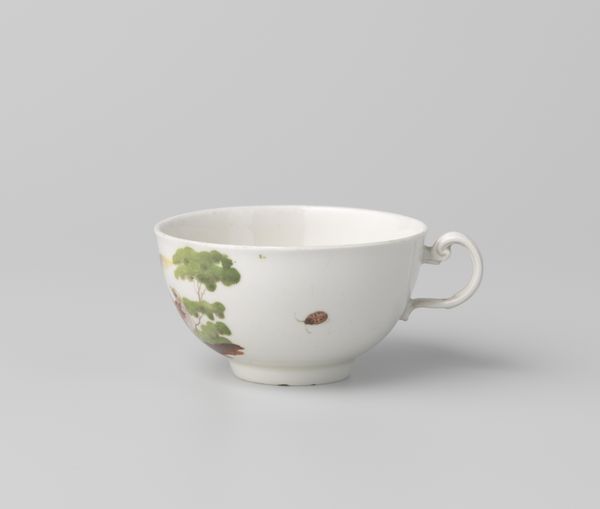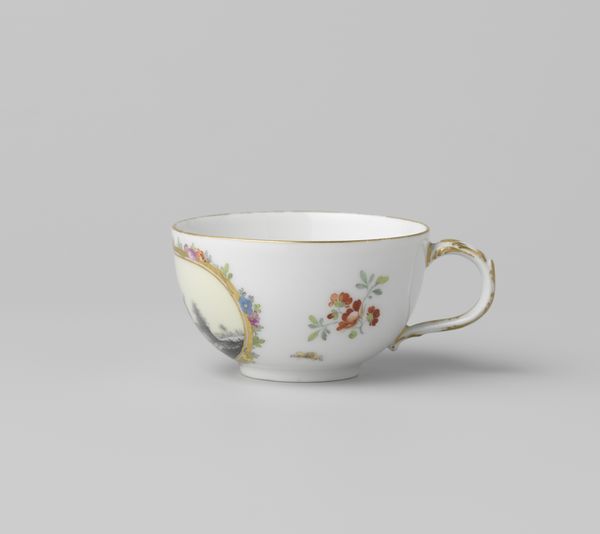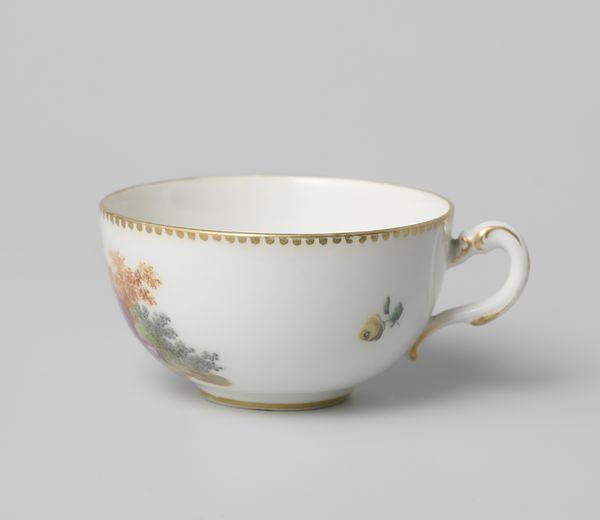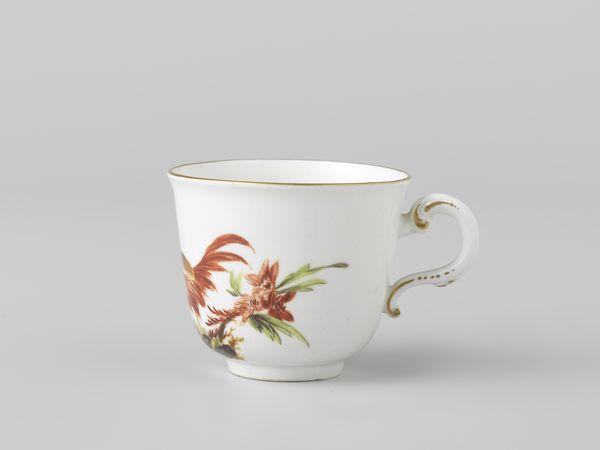
Dimensions: height 4.8 cm, diameter 7.1 cm, diameter 3.5 cm, width 9 cm
Copyright: Rijks Museum: Open Domain
Curator: This exquisite cup was created at the Ludwigsburg Porcelain Factory between 1760 and 1800. It's a stunning example of Rococo porcelain. What are your initial thoughts? Editor: It's lovely! The delicacy of the porcelain coupled with the miniature landscape scene creates a sense of contained beauty. The colours are muted, almost wistful, suggesting a yearning for an idealised, perhaps lost, pastoral world. Curator: Indeed. The landscape style painting, very characteristic of that period, offers a glimpse into the aristocratic ideals of the time. Landscape wasn't just backdrop, but an ideological canvas onto which power, ownership and taste were projected. It suggests the patron's aspirations and position in society. The single, strategically placed flower is interesting. Editor: Yes, and within that context, doesn't that singular flower point to the inherent fragility of such constructed worlds and imposed control? The Rococo period, while seemingly about pleasure and ornamentation, was underpinned by complex social dynamics. Porcelain, in itself a highly prized material, becomes a carrier of this deeper, slightly subversive commentary, it is a beautiful landscape painted with a powerful class statement and hidden meanings. Curator: Precisely. This cup speaks volumes about the era that produced it and how objects of daily use served as markers of status and engagement with political and aesthetic dialogues. The socio-political backdrop against which it was produced infuses this cup with so much symbolic meaning. Editor: Thank you for your detailed insight. Curator: My pleasure, it has certainly made my daily coffee all the more enlightening.
Comments
No comments
Be the first to comment and join the conversation on the ultimate creative platform.
